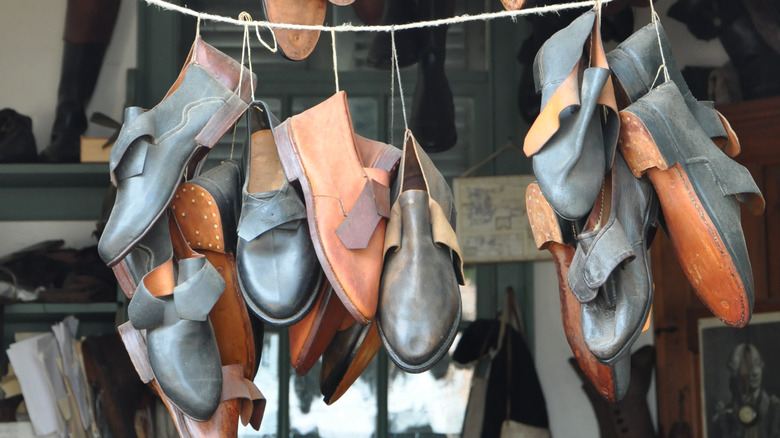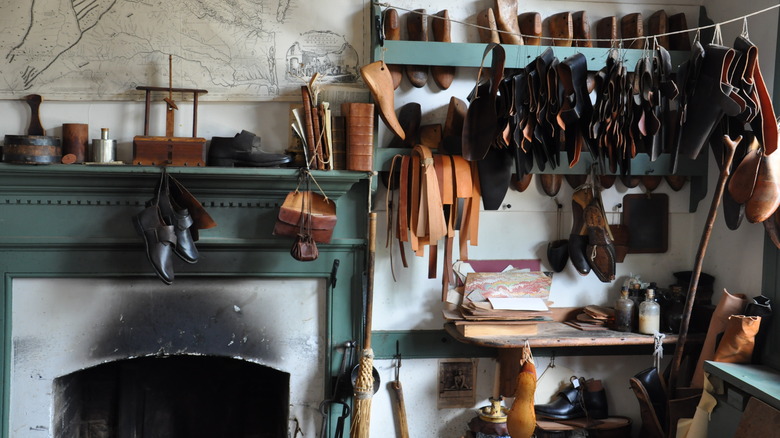What Life Was Like As A Shoemaker In The Colonial Era
Colonial-era shoemakers were known as cordwainers, per the Revolutionary War Journal. Cobblers, a word much more widely known today, were the people who repaired the shoes made by cordwainers. Cordwainers had up to five years more training than cobblers, and in Colonial America, cobblers were actually forbidden via proclamation to make shoes. John Smith, the principal founder of the Jamestown settlement in what became the colony of Virginia, was a shoemaker whose settlement was partly funded by a shoe trade with England. The first official and fully trained cordwainer to arrive in the colonies was Christopher Nelme in 1619, while Thomas Beard became the first cordwainer of New England when he landed in Plymouth in 1629.
New England cordwainers had small shops, often within their homes, and made shoes to order by request. Interestingly, they kept the lasts — the carved wooden models of peoples' feet — in stock for repeat customers. Large farms and plantations often had their own in-house tradespeople and artisans, including cordwainers, and some plantations apprenticed enslaved people to learn shoemaking and other trades to provide their services.
Bootmaking was the most prestigious type of specialty for cordwainers. Riding boots and jackboots were made primarily for soldiers and upper-class men and were not intended for walking. Indeed, they had tight leather calves meant to assist in controlling horses while riding them. Making women's shoes was a separate pursuit; options included light, soft dancing shoes traditionally made from dogs' skins, mules for indoor use, and pattens, which were tall, wooden-soled clogs often used to walk in mud.
When shoe shopping in America got political
As reported by the Revolutionary War Journal, in addition to having home practices, early American cordwainers and cobblers often traveled from town to town, exchanging shoemaking and repair for room and board and serving as a traveling news and gossip source. Unlike colonial boots and women's shoes made for dancing or indoor use, day-to-day colonial shoes were crafted for owners who walked long distances. Shoes' soles were made from leather, wood, and fabric, and were meant to be replaced as they wore out before the rest of the footwear.
By the 1760s, not only could Colonial American cordwainers offer shoes as good as those made in and imported from Great Britain, but they undertook a campaign to tie buying American shoes to patriotism, per Age of Revolutions. Philadelphia shoemaker Alexander Rutherford placed an advertisement addressed to his customers that encouraged them "to distinguish themselves by their patriotism and encouragement of American manufactures, that he makes and sells all sorts of worsted or wool shoes, of all sizes, as neat and cheap as any imported from England." Newspapers and pamphlets began referring to imported shoes disparagingly as "frippery" and "finery," and the now well-known exhortation to "buy American" was born. Shoes imported from Britain made from silk, satin, leather, and wool were seen and continued to be seen by many as covetable and fashionable. But for others, buying shoes made in America represented support for the freedom of the American colonies and politicized the previously benign act of shopping for a common item.

